Emily Charlotte
Welcome to a world of wedding ramblings.
Here you'll typically find an array of topics from fun, inspirational posts to a more thoughtful perspective on something topical.
There's no particular order or continuity to my blogging (sorry!) I just share my thoughts with you as and when they come to me. or I need to get something off my chest.
If there is anything in particular you'd like my take on then just let me know!
Styles of Marquee for Your Marquee Wedding
October 30, 2024
If you’ve reached this post then you are likely a marquee couple; at the very least, considering whether a marquee wedding is a good option for you. There are so many pros to a having marquee wedding, as well as some definite considerations before going ahead – but that’s a post for another day! Committing to a marquee wedding is just the first step; you may now be wondering, what type of marquee do we want? What options are there? What would work best in the space that we have?
If this sounds like you, then I’m here to try and answer some of those questions for you with this very high level, simple run through of the 2 (or 3) most common type of marquees. I’ll keep it basic and consider the key points for each style so you leave this post knowing where you want to go next, so think of this as the first page in the Dummies Guide to Marquee Wedding Planning…
Pole Tent
Perhaps the most common marquee option is a Pole Tent or Traditional marquee. In its simplest terms, this is a type of marquee that has poles supporting it’s fabric structure, rather than a frame. The marquee canopy is peaked and will be stretched into position using tension/Guy ropes. The majority of the weight is supported by tall, central poles which will be visible within your marquee, with shorter poles around the outside.
Typically pole tents consist of wooden poles, canvas fabric (or PVC) and ropes.
Pole tents are ideal on a soft surface, such as a lawn as they’re pegged into the ground.
The sides of a pole tent can be opened, closed or clear, so there is option for letting in lots of natural light should you wish.
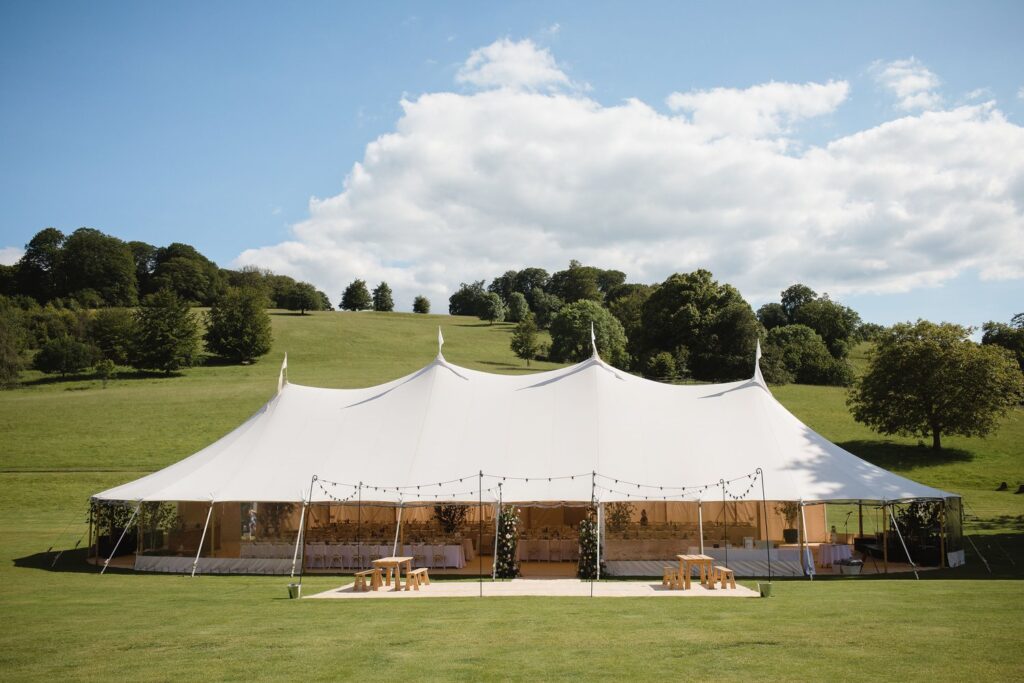
Sperry tents are often referenced in the same context; don’t be confused by this, Sperry tents are an American brand of pole tent, so for keeping it straightforward – it’s the same thing!
If you think of an elegant English garden wedding; it’s most likely the classic pole tent that comes to mind.
Clear Span Marquee
Another popular style of marquee is the Clear Span Marquee; if the pole tent is considered the quintessential English traditional marquee, then the Clear Span is it’s more modern, minimalist sister.
To clarify, a Clear Span Marquee should not be confused with one that is glass/has a transparent roof. That may indeed be a Clear Span Marquee, but the clear roof is not where it gets it’s name.
A Clear Span Marquee is one that has no poles or supports. It’s constructed using an aluminium frame, and so the space within the marquee is clear and unobstructed, hence the name!
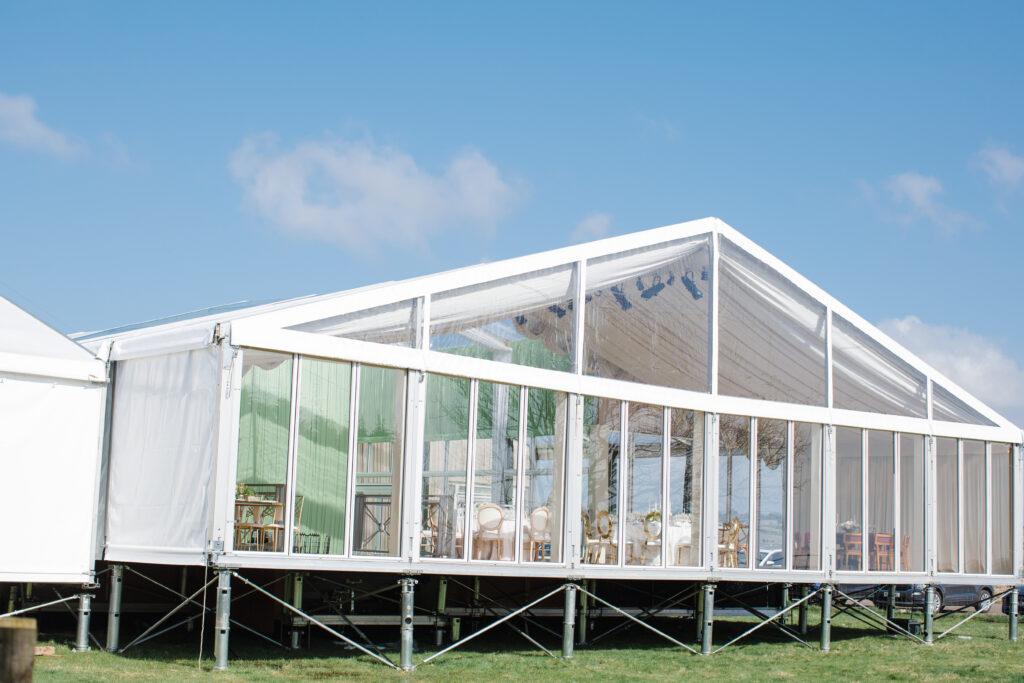
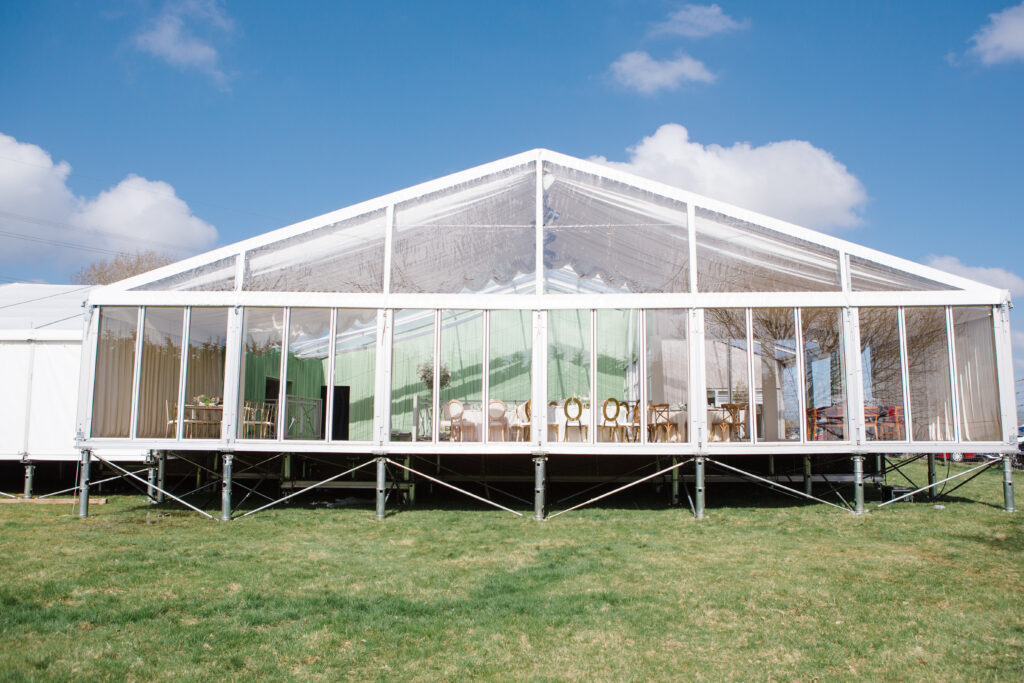
Clear Span Marquees are a great option when you want to maximise space within the marquee, and/or if you have limited space surrounding the marquee. Pole tents require a certain amount of space around the marquee itself due to the ropes and pegging, by comparison the Clear Span requires room just for the frame(s).
Another benefit is that the Clear Span can be erected on any ground, so if you have a hard surface this could be a good option for you. It’s also the more sturdy option so could be considered more weather resistant than more traditional marquee options.
If you’re having a more formal or black tie wedding, then in my opinion a Clear Span should be a front runner when considering your marquee options.
Tipis
Disclaimer: A Tipi is technically a type of Pole Tent, but it’s so distinctive it’s worth mentioning separately.
You’ll probably know from the get go whether a tipi is the right marquee for you or not, as I’ve said, it’s distinctive in style and very much suited to a more relaxed wedding; most typically associated with festival style weddings or those in a natural, rural setting.
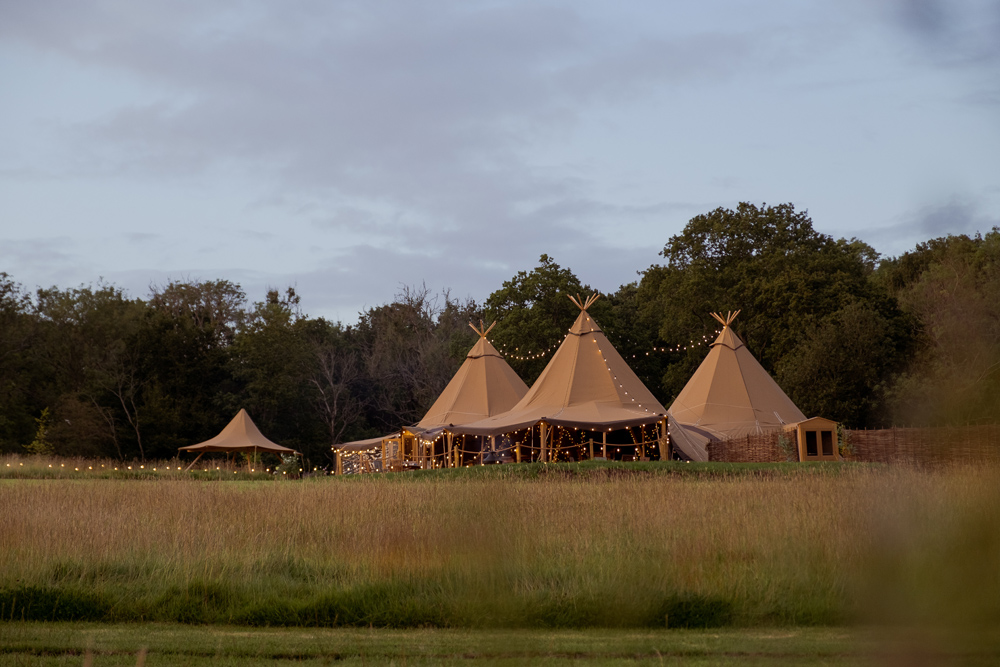
Tipis are constructed using timber poles which gives them their signature peaks, and finished with natural colour canvas.
Due to their shape, you would most commonly have multiple tipis joined together, so this should be considered when planning your layout.
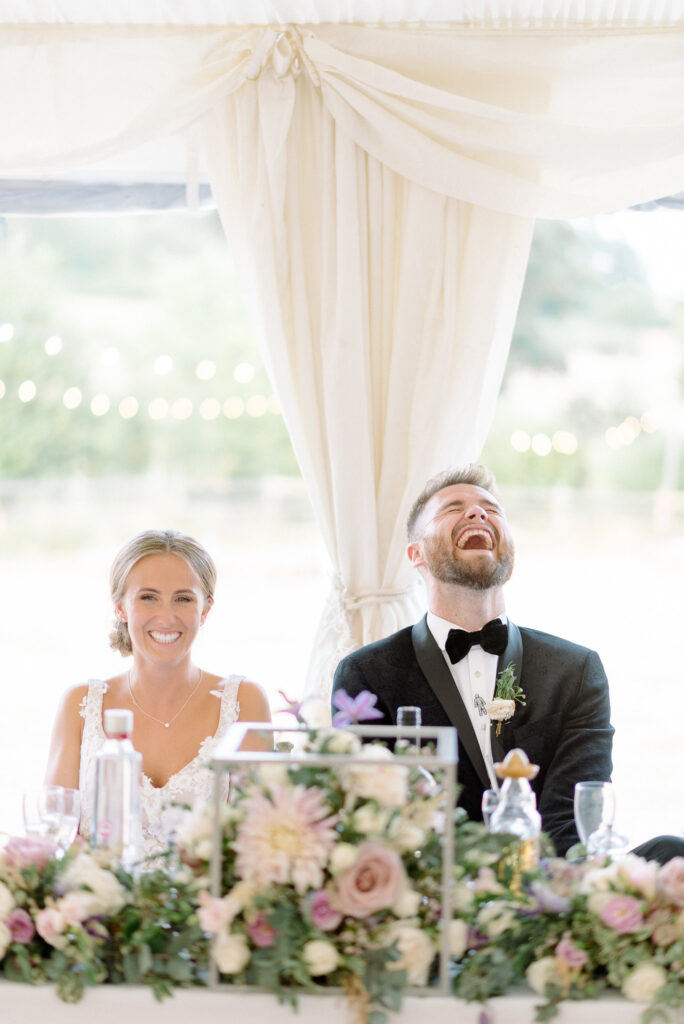
We’ve just dipped a toe into the marquee world; there are many sub categories such as Pagodas, Yurts, Sailcloth etc, but in very general terms they are variations of the above.
I’ve chosen to focus on the Pole Tent, Clear Span Marquee and Tipi as this should be a good starting point for you when you’re starting to navigate planning a marquee wedding.
You should also consider that every marquee will require a separate catering tent, and there are many other elements that need to come together – flooring, linings, lighting, power and so on, but we’ll save all that for another day!
I hope this has helped simplify a few things for you and if you’re starting to plan a marquee wedding then I highly recommend you get an experienced wedding planner onboard. There is so much more to think about versus getting married at an established venue. This absolutely shouldn’t put you off your dream marquee wedding, but it is quite the project to take on alone and the support of a wedding planner can prove invaluable.
If you’d like to discuss your marquee wedding then do drop me an email on weddings@emilycharlotte.co.uk – I’d love to hear from you!